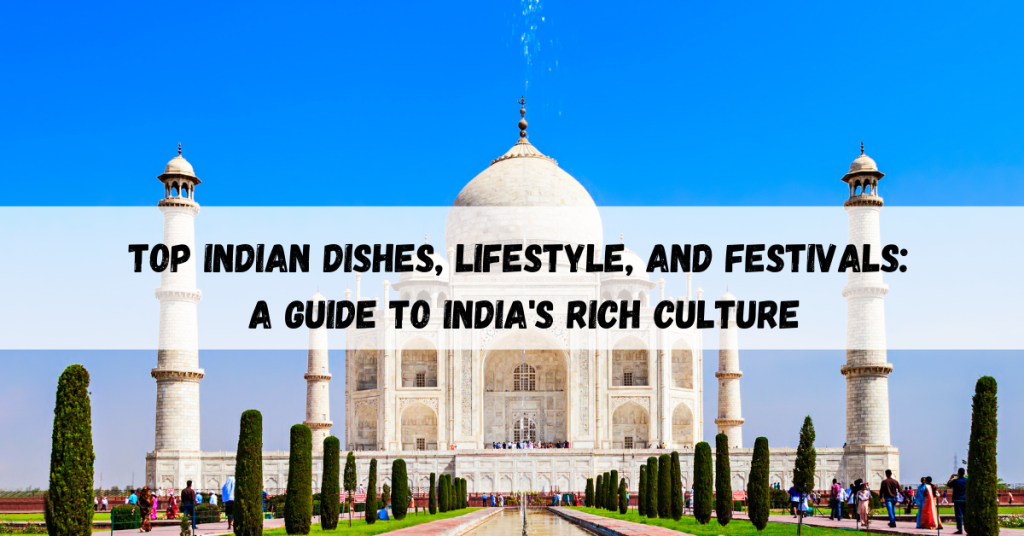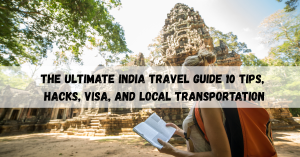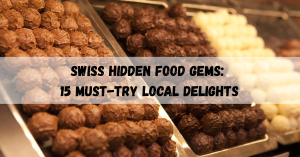India is a land of rich flavors, vibrant traditions, and grand celebrations. From regional Indian cuisines with creamy curries and crispy street snacks to a deep-rooted cultural lifestyle and colorful festivals, every aspect of India is a sensory delight.
This guide explores top Indian dishes, Indian lifestyle, and major Indian festivals, offering insights into the country’s diverse food, traditions, and celebrations.
Top Dishes in Indian Cuisine, A Culinary Journey
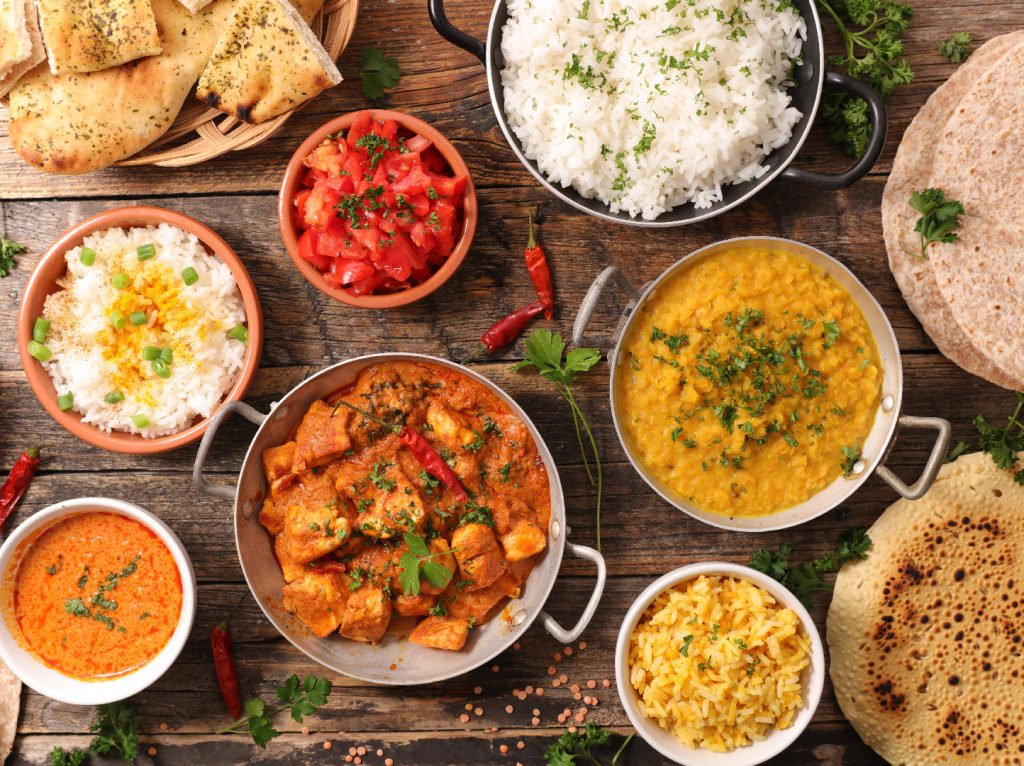
Regional Indian Cuisines, A Mix of Flavors
India’s culinary diversity is influenced by geography, climate, and culture, with each region offering distinct flavors and cooking techniques.
North Indian Cuisine, Rich & Creamy Delights
- Butter Chicken & Paneer Tikka: Mughlai-inspired dishes with creamy tomato-based gravies, best enjoyed with naan or roti.
- Chole Bhature & Dal Makhani: Hearty, spiced chickpeas served with deep-fried bread, and a rich black lentil dish slow-cooked with butter.
- Rogan Josh & Kashmiri Wazwan: Kashmiri delicacies featuring tender lamb cooked in aromatic spices, part of an elaborate multi-course feast.
South Indian Cuisine, Spiced & Savory Delicacies
- Masala Dosa & Idli Sambhar: Thin, crispy rice crepes and steamed rice cakes served with spiced lentil soup and coconut chutney.
- Chettinad Cuisine: A fiery Tamil Nadu specialty, featuring peppery, aromatic curries made with freshly ground spices and coconut.
- Coconut & Seafood Curries: Kerala’s signature dishes, infused with coconut milk, tamarind, and fresh seafood like prawns and fish.
read also: 20 Top Indian Destinations and Must-See Attractions
West & East Indian Specialties
- Gujarati Dhokla & Thepla: Light, fermented snacks made from gram flour, offering a tangy, slightly sweet taste with a soft texture.
- Goan Seafood & Maharashtrian Misal Pav: A mix of Portuguese-influenced Goan fish curries and spicy Maharashtrian sprout-based curry served with bread.
- Bengali Sweets: Rasgulla & Sandesh: Soft, spongy cottage cheese sweets soaked in sugar syrup or infused with cardamom and saffron.
Indian Spices & Cooking Techniques

Indian food owes its rich flavors to a variety of spices and traditional cooking techniques.
Essential Indian Spices & Their Uses
| Spice | Health Benefits & Uses |
|---|---|
| Turmeric | Anti-inflammatory, used in curries |
| Cardamom | Aids digestion, enhances desserts |
| Cumin | Boosts immunity, adds earthy flavor |
| Coriander | Cooling effect, common in chutneys |
| Asafoetida (Hing) | Improves digestion, adds umami taste |
| Garam Masala | A blend of warming spices for curries |
Traditional Cooking Methods
- Tandoor Cooking: Clay oven roasting for smoky flavors (Tandoori Chicken, Naan).
- Dum Cooking: Slow-cooked, sealed pot technique used for Biryani.
- Tadka (Tempering): Frying spices in ghee to enhance aroma and taste.
Street Food in India: Must-Try Dishes
India’s street food culture is vibrant, offering affordable, flavorful snacks loved by locals and tourists alike.
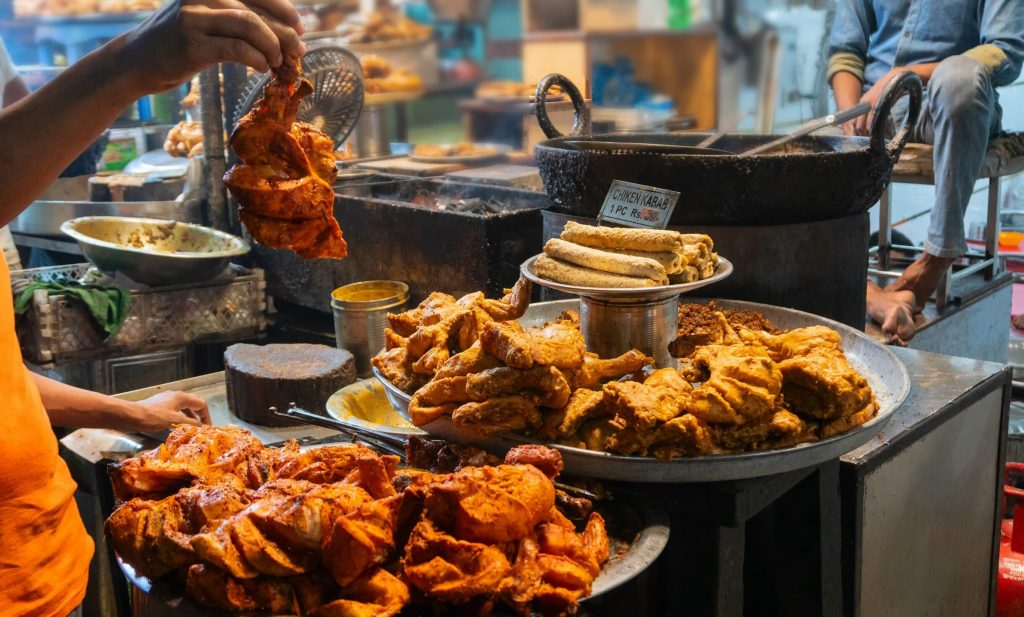
Popular Street Foods Across India
- Pani Puri (Golgappa): Crispy puris filled with tangy tamarind water.
- Vada Pav & Pav Bhaji: Mumbai’s favorite fast food.
- Aloo Tikki & Chaat: Spiced potato patties with chutneys.
- Jalebi & Kachori: Sweet and savory delights from Rajasthan.
Indian Lifestyle, A Blend of Tradition & Modernity
India’s lifestyle is a unique fusion of tradition and modernity, where ancient customs coexist with urban advancements. While traditional values shape family life, clothing, and greetings, modern influences drive technological growth, fashion trends, and evolving work cultures.
Cultural Aspects of Indian Lifestyle
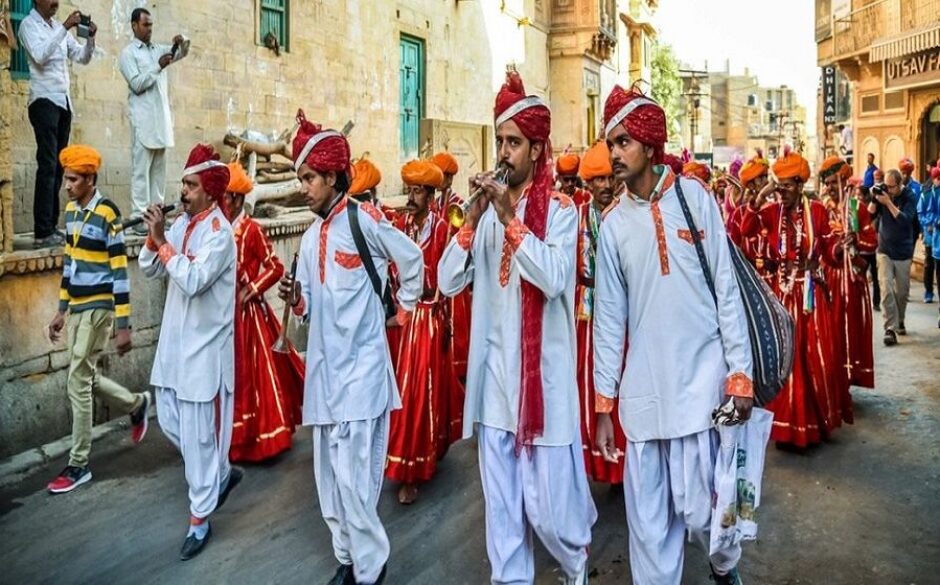
Joint Family System
Many Indian families live in multi-generational households, fostering strong bonds and shared responsibilities. This system ensures financial, emotional, and moral support, making family the cornerstone of Indian society.
Namaste Greeting
“Namaste,” a gesture with folded hands, is a traditional Indian greeting symbolizing respect, humility, and warmth. It is widely used in personal interactions, yoga practices, and religious ceremonies.
Traditional Attire
Indian clothing reflects its rich heritage and regional diversity. Sarees, lehengas, and salwar suits are worn by women, while men wear kurta pajamas and sherwanis, especially during festivals and weddings.
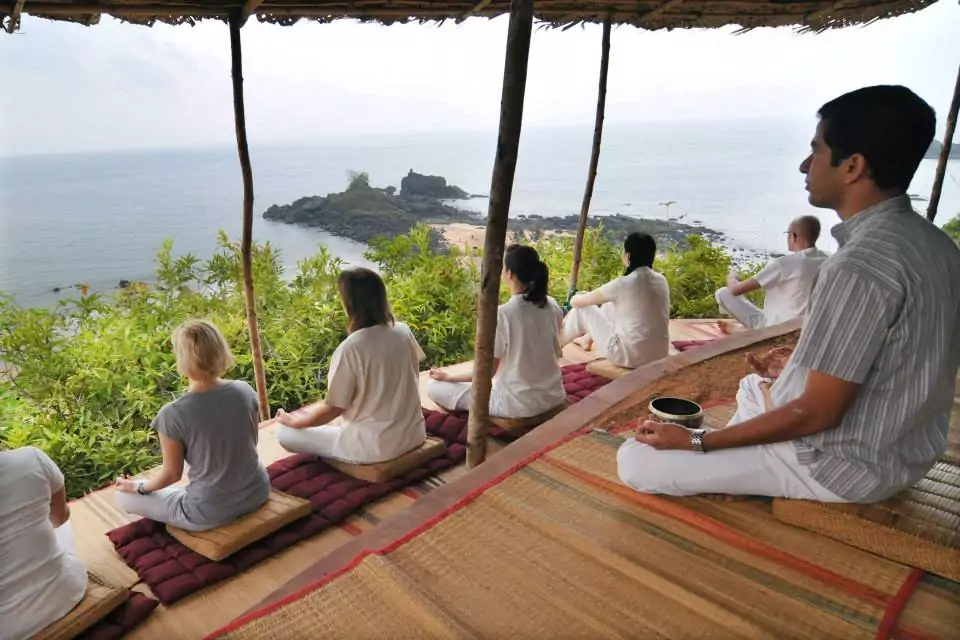
Yoga Practices
Originating in India, yoga includes Pranayama (breath control) and Asanas (postures) to promote physical health and mental well-being. Daily yoga practice is a core part of Indian spirituality and fitness.
Ayurvedic Healing
Ayurveda, India’s ancient medicinal system, focuses on balancing Doshas (body energies) through herbal remedies, detox therapies like Panchakarma, and natural, plant-based diets.
Modern vs. Traditional Indian Lifestyle
Urban India
India’s cities are rapidly evolving, influenced by Western culture, advanced technology, and a fast-paced corporate work culture. Malls, skyscrapers, and global brands dominate urban landscapes.
Rural India
In contrast, rural India preserves traditional crafts, organic farming, and a simple, community-based lifestyle. Villages remain the heart of India’s cultural and agricultural heritage.
Major Indian Festivals, A Year of Celebrations
India celebrates numerous festivals throughout the year, each marked by grand rituals, feasts, and vibrant traditions. These celebrations reflect India’s deep-rooted spiritual beliefs and cultural diversity.
Top Festivals in India & Their Significance
| Festival | Celebrated For | Special Dishes |
|---|---|---|
| Diwali | Festival of Lights | Laddoo, Kaju Katli |
| Holi | Festival of Colors | Gujiya, Thandai |
| Navratri | Worship of Goddess Durga | Fasting Foods, Sabudana Khichdi |
| Ganesh Chaturthi | Birth of Lord Ganesha | Modak, Puran Poli |
| Eid-ul-Fitr | End of Ramadan Fasting | Seviyan Kheer, Biryani |
| Christmas in India | Christian Festivities | Plum Cake, Roast Chicken |
Offbeat & Unique Indian Festivals
Hornbill Festival (Nagaland)
A week-long tribal celebration featuring folk music, dance, and indigenous traditions, showcasing the vibrant culture of Northeast India.
Pushkar Camel Fair (Rajasthan)
A lively desert fair known for camel races, folk performances, and handicraft markets, attracting travelers from around the world.
Chhath Puja (Bihar)
A sacred Hindu sun-worshipping festival where devotees gather along riverbanks to offer prayers and gratitude to the Sun God.
Ganga Aarti (Varanasi)
A breathtaking ritual on the Ganges River, where priests perform synchronized prayers with flaming lamps, accompanied by devotional chants.
Makar Sankranti (January)
- A harvest festival celebrated with kite flying, sesame sweets, and bonfires in different parts of India.
- Known as Pongal in Tamil Nadu, Lohri in Punjab, and Uttarayan in Gujarat.
Baisakhi (April)
- A Punjabi festival marking the Sikh New Year and harvest season.
- Celebrated with Bhangra dances, traditional feasts, and Gurudwara prayers.
Onam (August-September)
- Kerala’s biggest festival, honoring the return of King Mahabali.
- Famous for Pookalam (floral decorations), Vallam Kali (snake boat races), and the Onam Sadhya (traditional feast).
Krishna Janmashtami (August)
- Marks the birth of Lord Krishna, celebrated with midnight prayers, temple processions, and Dahi Handi (pot-breaking ritual).
Durga Puja (September-October)
- A grand Bengali festival celebrating Goddess Durga’s victory over evil.
- Kolkata is famous for huge artistic idols, pandal decorations, and Dhunuchi dance.
Karwa Chauth (October)
- A Hindu fasting festival where married women pray for their husband’s long life.
- The fast is broken after moonrise with a traditional ceremony.
Guru Nanak Jayanti (November)
- The birth anniversary of Guru Nanak, the first Sikh Guru.
- Celebrated with prayers, langar (free community meal), and religious processions in Gurudwaras.
Lesser-Known Unique Indian Festivals
Hemis Festival (Ladakh)
- A Buddhist festival celebrated in Hemis Monastery, featuring masked dances and traditional music.
Losar Festival (Ladakh, Arunachal Pradesh, Sikkim)
- The Tibetan New Year, marked by prayer rituals, folk dances, and feasting.
Bihu Festival (Assam)
- A harvest and New Year festival celebrated with Bihu dance, traditional songs, and feasts.
Dree Festival (Arunachal Pradesh)
- A tribal festival of the Apatani community, featuring animal sacrifices, cultural dances, and community feasting.
Thaipusam (Tamil Nadu, Kerala)
- A Tamil Hindu festival where devotees perform piercing rituals and carry Kavadi (decorated structures) as a sign of devotion.
Teej (Rajasthan, Haryana, Uttar Pradesh)
- A monsoon festival where women dress in green, apply henna, and swing on decorated swings.
India’s charm lies in its diverse cuisine, rich traditions, and colorful festivals. From butter chicken and masala dosa to Diwali celebrations and yoga retreats, every experience is a journey into culture and heritage. Whether you’re indulging in street food in India, exploring Indian lifestyle, or witnessing major Indian festivals, the country promises a feast for the senses.
Pack your bags, savor the flavors, and immerse yourself in India’s cultural magic!
FAQs
What are the must-try Indian dishes for first-time visitors?
Try butter chicken, masala dosa, chole bhature, biryani, and pani puri, along with traditional sweets like jalebi and rasgulla.
Which is the biggest festival celebrated in India?
Diwali, the Festival of Lights, is India’s biggest festival, marked by fireworks, sweets, and grand celebrations across the country.
How is Indian lifestyle different from Western culture?
Indian lifestyle emphasizes family values, spirituality, and traditions, while urban areas blend modern trends with cultural heritage.
What are the best destinations to experience Indian street food?
Visit Delhi for chaat and parathas, Mumbai for vada pav and pav bhaji, Kolkata for kathi rolls, and Amritsar for lassi and kulchas.
When is the best time to visit India for festivals and food experiences?
The best time is October to March, covering Diwali, Navratri, Christmas, and winter food specialties across India.
